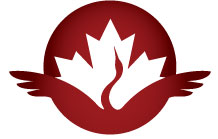[On June 4, 2013, I was called as a witness to testify before the House of Commons Standing Committee on Foreign Affairs and International Development. Below is the entirety of my prepared statement – I believe, there were some off the cuff remarks that probably drove the French language interpreters nuts.]
 Good afternoon, ladies and gentlemen of the Committee. Thank you for inviting me today to speak. As I wear several hats when it comes to North Korea, whether it is HanVoice, www.cankor.ca, or the North Korean Human Rights Film Festival Toronto, on behalf of all these organizations, I again extend my thanks.
Good afternoon, ladies and gentlemen of the Committee. Thank you for inviting me today to speak. As I wear several hats when it comes to North Korea, whether it is HanVoice, www.cankor.ca, or the North Korean Human Rights Film Festival Toronto, on behalf of all these organizations, I again extend my thanks.
Canada’s DPRK Policy: Controlled Engagement
Canada’s response to North Korea has been, at least rhetorically, aggressive. Since 2010 our government has pursued what has been termed a “Controlled Engagement” policy. The Controlled Engagement (“CE”) policy restricted bilateral contact with the regime except to four distinct areas: regional security concerns, human rights and the humanitarian situation, inter-Korean relations, and consular issues. It also forbid Canadians from importing and exporting anything into North Korea, and also introduced strict technology and investment sanctions. Read the rest of this entry »







